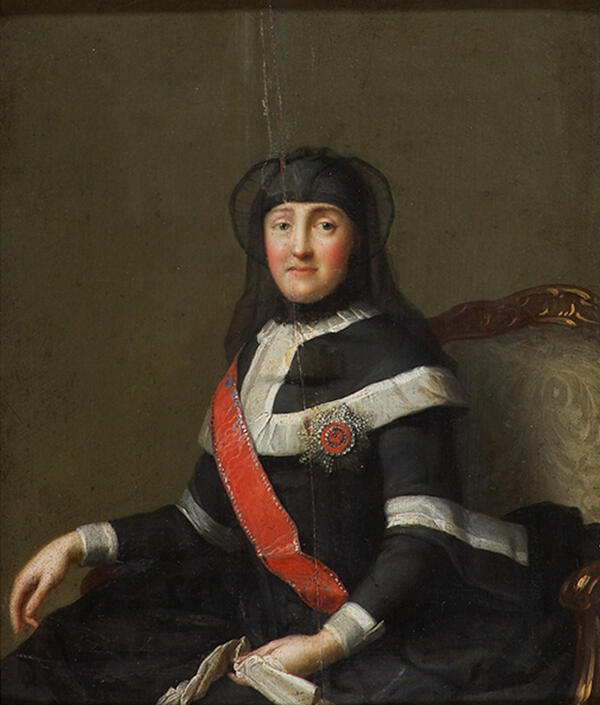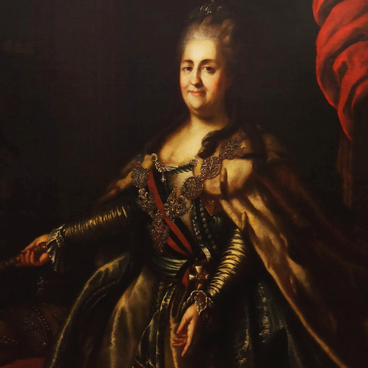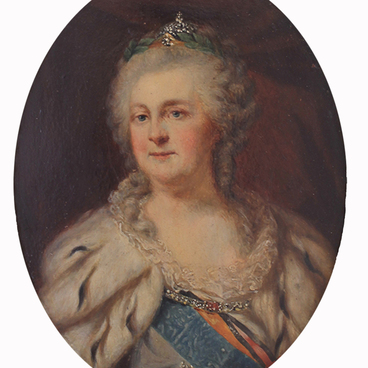None of the Russian tsars were portrayed as often as Catherine II — she was depicted dozens of times. Portraits of both the most talented artists of the epoch and those who were distinguished by a more modest talent have been preserved. The artists tried to portray the empress as she would like to see herself, in the splendor and grandeur of power, in the image of an earthly goddess, or just a beauty. The Danish portrait painter Vigilius Eriksen, who worked in St. Petersburg at Catherine’s court from 1757 to 1772, gained particular popularity among his contemporaries. Catherine admired Eriksen’s canvases, saying in her letters that the artist made about thirty portraits of her in different poses and costumes, in oil, and pastels. ‘The most similar and most complete portraits of Her Majesty come from Eriksen’s easel, ’ a contemporary wrote at the time.
In 1762, Eriksen created an unusual portrait of Catherine in mourning. The tradition of mourning portraits was closely related to European culture and was not uncommon when depicting crowned persons. By ordering this portrait, Catherine II wanted to emphasize her personal loss and grief for the Russian Empress Elizabeth Petrovna. After all, she was the one who wore mourning for more than six months. Such a tribute and deep respect, which was shown by the Grand Duchess and future Empress, a German by nationality, to the deceased Russian Empress, aroused the affection of many influential people at the Russian court.
The portrait created by Eriksen was intimate, small in size, and, apparently, was intended for private use in the Empress’s small apartments and private rooms. Like many portraits of the Danish artist, Catherine II considered this one to be successful and ordered to approve it as a standard for repetition. Catherine was not mistaken: the portrait was very popular and was distributed in numerous pictorial copies and engravings. The portrait from the Taganrog Art Museum is a copy of the 18th century, painted by an unknown artist from the aforementioned standard.
In 1762, Eriksen created an unusual portrait of Catherine in mourning. The tradition of mourning portraits was closely related to European culture and was not uncommon when depicting crowned persons. By ordering this portrait, Catherine II wanted to emphasize her personal loss and grief for the Russian Empress Elizabeth Petrovna. After all, she was the one who wore mourning for more than six months. Such a tribute and deep respect, which was shown by the Grand Duchess and future Empress, a German by nationality, to the deceased Russian Empress, aroused the affection of many influential people at the Russian court.
The portrait created by Eriksen was intimate, small in size, and, apparently, was intended for private use in the Empress’s small apartments and private rooms. Like many portraits of the Danish artist, Catherine II considered this one to be successful and ordered to approve it as a standard for repetition. Catherine was not mistaken: the portrait was very popular and was distributed in numerous pictorial copies and engravings. The portrait from the Taganrog Art Museum is a copy of the 18th century, painted by an unknown artist from the aforementioned standard.



